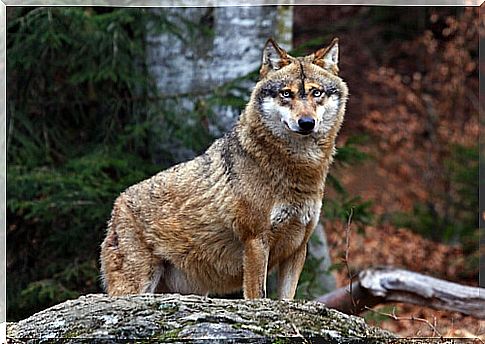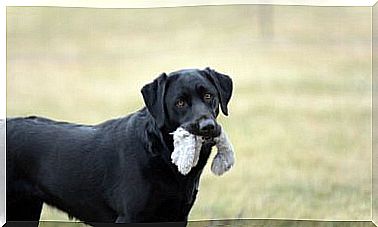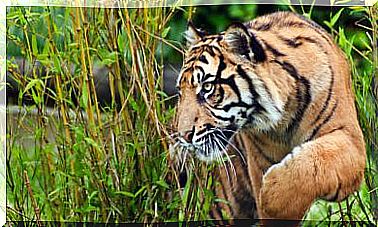What Is A Predator?

When an animal hunts for food it is known as a predator. There are them at different scales, since there are also super predators, that is, those that feed on those that prey, and are at the top of the food chain. Learn more about both in the following article.
The predator and its relationship with prey
Predation is one of the most important techniques to ensure balance between different species. A predator and its prey are related because they are part of the same food chain.
It is worth noting that a carnivore gets its energy from a herbivore, which had been nourished by plants or fruits. Among the predators we can highlight different types:
1. Felines
Felines are the best prepared carnivores to hunt, since both their anatomies and their techniques allow them to ensure food.
2. Canids
These hunt smaller animals, whether herbivores or not, and almost always move in groups when getting their food.
3. Mustelids
One of the characteristics of these animals is that they are small, but they are very well prepared for hunting. In addition, they can feed on reptiles or birds.
Examples of predators
Did you know that the human being is the most fearsome super predator in the world? This is because its omnivorous diet and its behavior is different from that of the rest of the species; the other animals that belong to the group of predators hunt only for food. Some of them are:
1. Tiger
This feline is the super predator of Asia and its diet is based on buffalo, wild boar, deer and antelope. But, in addition, tigers are ‘opportunists’ and do not despise smaller animals such as hares, monkeys or fish.
Normally, they hunt herbivores using their strength to hit and knock down their prey, thanks to their powerful bite with which they give an immediate death. Although they are large, tigers can run up to 90 km / h and begin the race for food with a roar, which is intended to paralyze the victim.
2. Gray wolf
Most species of wolves have similar hunting habits: their prey are medium and large ungulates, such as sheep, goats, deer or reindeer.

It is also a predator that can consume rodents and birds, and has the capacity to consume about 3.5 kilos of food at one time. This behavior is due to the fact that they do not ‘know’ when they will be able to feed again.
3. Badger
It is an omnivorous animal that basically feeds on bees, reptiles, worms or worms, depending on where it lives: there are Asian, European and American badgers. To get their food they use their hearing and smell, since their sight is limited, which is why they prefer to come out of their burrow at night.

4. Polar bear
Of all the species of bears that exist, the polar or white is the largest, and it is also the only super predator in the Arctic. It feeds on the other individuals that inhabit the frozen areas, although its favorites are the baby seals.
Polar bears can eat up to 30 kilos of food in a day. It is striking that to hydrate they drink the blood of their prey, because the water in that area is acidic and salty.
5. Imperial Eagle
Its main food is the rabbit and it can hunt it, either alone or in pairs. In addition, this predator can choose other prey to feed: hares, crows, foxes, pigeons and small rodents.

The imperial eagle has great eyesight that allows it to detect an animal from a distance. Now, once he ‘marks’ it with his gaze, he begins the swift flight to catch her with his claws in flight, with a precision worthy of praise.
6. Dolphin
It is one of the most intelligent marine predators, which is found near the coasts and uses sounds to communicate with each other and to reach its prey: sardines, herring and cod, mainly. Because they hunt in groups, dolphins can circle a school and make catching easier. In addition, they have sharp teeth that allow them to chew and tear prey.
7. Spider
All species are predatory and use a network – known as a ‘spider web’ – to trap their prey, and thus prevent them from escaping. The spider must simply wait for a victim to fall into the sticky tissue. When that happens, they are injected with a poison to paralyze them, then gastric juices are thrown at them and they digest externally.








